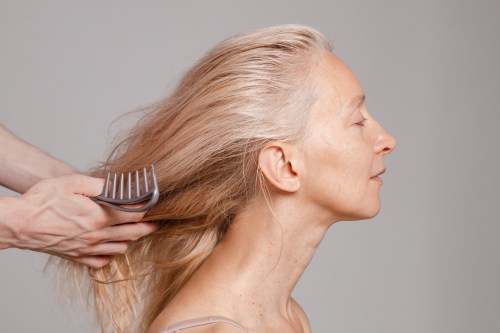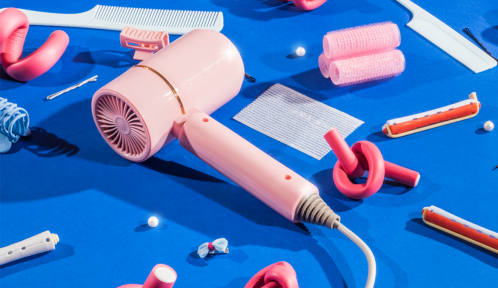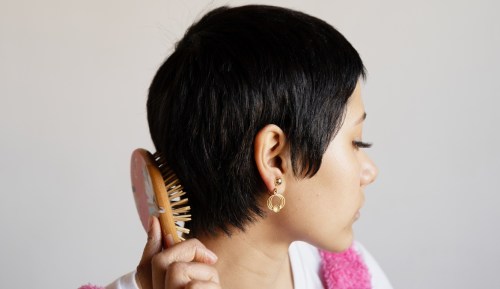Our editors independently select these products. Making a purchase through our links may earn Well+Good a commission
We’ve all heard that washing your hair too frequently isn’t good for your scalp or strands. But I was last-Friday-years-old when I found out that water—not just shampoo—is to blame.
Water damaged hair is an issue a lot of us may be dealing with without even realizing it, and it can happen even if you’re washing with the purest H2O there is. “Water in general has a higher pH than hair,” says Christine Thompson, the color director at Spoke and Weal. “It opens the cuticle on the hair shaft, and if the water is heavily treated, this may make the pH even higher.” This can cause discoloration and corrosion in your hair, and leave your once-smooth texture feeling rigid, course, and tangly.
What’s more, hot water and the steam from hot water can exacerbate this whole sitch. Derms have already told us that taking too-hot showers isn’t great for skin, so it shouldn’t be a surprise that this translates to your scalp, too. “While it may feel nice, especially on colder months, hot water can leave your scalp feeling itchy and dry, which can prevent optimal hair growth,” says Linsey Barbuto, leading artistic director and founder of Perlei Salon. Instead, opt for warm water (aka: very little steam but not frigid), and if you can bear it, finish off with a cold rinse for some added shine.
What’s more? Chemically processed strands are more porous than virgin ones, and since H2O molecules are super small, they can get inside of those pores fairly easily. The water then swells up and pushes open your hair cuticles, causing them to raise. “Raised cuticles disrupt and distort the hair surface, making it look dull and feel rough,” says Joe Cincotta, PhD, director of research and development at Color Wow. When this happens, your cuticles won’t line up in the right way, which will leave your hair looking frizzy.
Obviously, the water itself is a problem, but it’s only part of the problem. Stylists say that “hard water,” which is packed with metals and minerals like calcium, magnesium, and iron, can damage hair further. “These positively charged metals and minerals attach strongly to the hair surface especially chemically processed hair,” explains Dr. Cincotta. “Calcium and magnesium dull and weigh down the hair while metals such as iron, copper and manganese discolor hair.” So if you’ve ever looked in the mirror and thought”why does my gorgeous golden dye job suddenly look and feel like straw?” know that hard water is likely prime suspect number one.
So what can you do to deal with water damaged hair, aside from committing to a lifestyle that involves a whole lot more dry shampoo? To prevent damage before it happens, any stylist will tell you that the best thing you can do is limit your number of weekly washes. When you do decide to lather up, Thompson suggests using a pre-wash treatment, like Olaplex Hair Perfector No. 3 ($28), and getting water out of your hair as soon as possible with a water-wicking towel like this one from Aquis. If you think you’ve got hard water in your home, you can also invest in a shower head filter to separate out the minerals before they make it to your hair.
If you start to see evidence of water damaged hair, treat your hair with Colorwow Dream Filter ($24), which uses molecular and polymeric filters to encapsulate the metals and minerals in your strands and pull them out—kind of like a magnet. Follow it up with a sulfate-free clarifying shampoo like Verb Reset Clarifying Shampoo ($32) and treat yourself to weekly hair masks to help smooth things out. And also, consider this another excuse to skip the wash for just one more day… five days in a row.
We had NYC’s most in-demand hairstylist answer your most pressing hair-care questions—including how often you *really* need to get it trimmed. And these are the best conditioners to use for fighting frizz, no matter what type of hair you’ve got.
Sign Up for Our Daily Newsletter
Get all the latest in wellness, trends, food, fitness, beauty, and more delivered right to your inbox.
Got it, you've been added to our email list.










